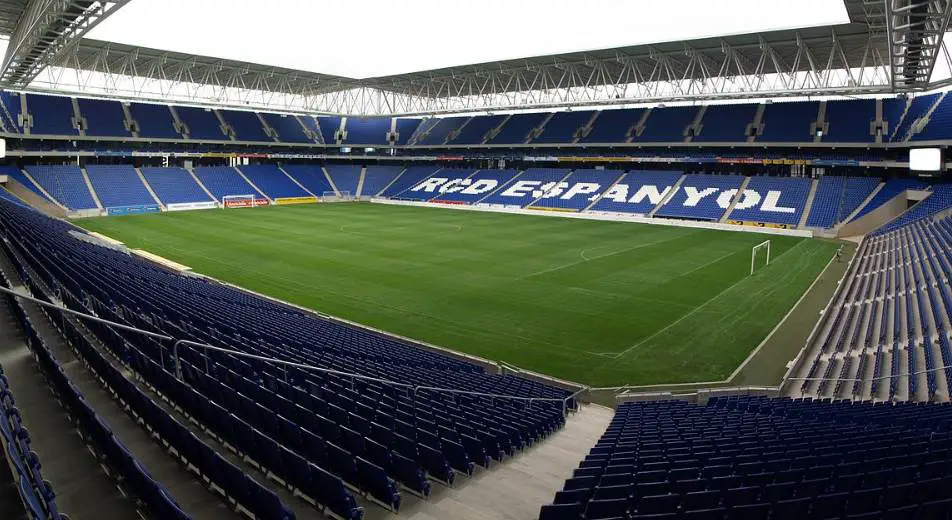Spain is home to some of the biggest stadiums in Europe, mainly because two of the biggest football clubs in the world play in La Liga, the top flight of Spanish football.
Yes, these clubs are FC Barcelona and Real Madrid, two football clubs that are popular all across the world.
Most of the biggest stadiums in Spain are remarkably concentrated in 3 of the country’s major cities, Barcelona, Madrid, and Seville.
Most arenas are used for association football (or soccer in some countries) matches but some also feature an athletics track. Some of the newest are multi-purpose stadiums where concerts can take place as well.
So what are the largest stadiums in Spain? Let’s find out!
1. Camp Nou
- Location: Barcelona
- Capacity: 99,354
Camp Nou isn’t just the biggest stadium in Spain, it’s also the biggest stadium in Europe. It was constructed between 1954 and 1957 and has been expanded several times throughout its history, including in 1995, 2008, and 2018.
The fantastic home of FC Barcelona features 99,354 seats at the moment which makes it the 4th largest stadium in the world used mainly for association football. The club has plans to expand the stadium further and rebrand it as the “Nou Camp Nou,” a project that is scheduled to be completed for the 2025-2026 season.
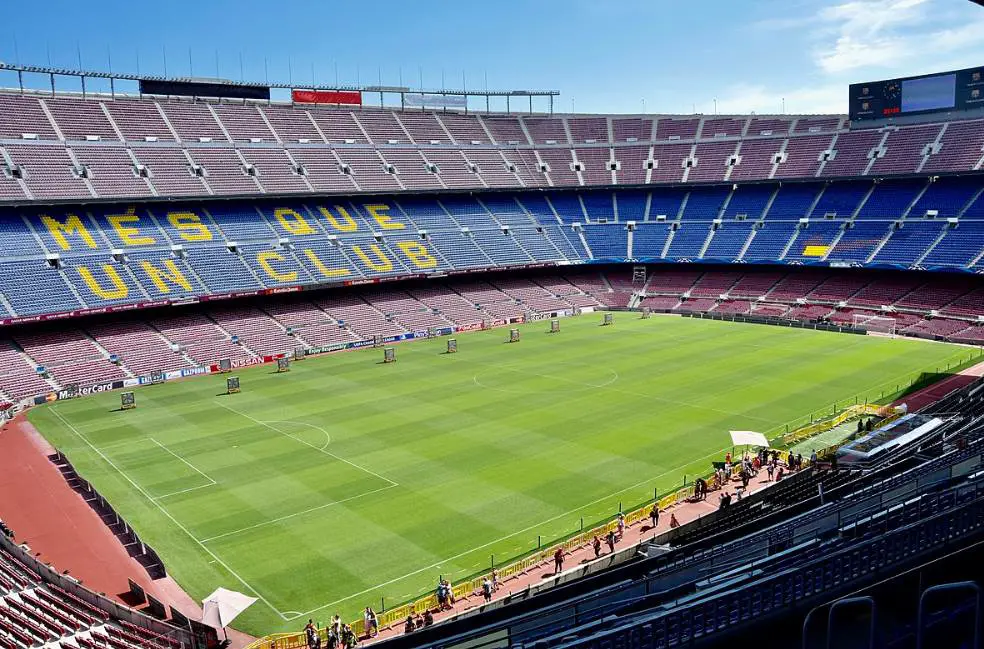
2. Santiago Bernabéu Stadium
- Location: Madrid
- Capacity: 81,044
The Santiago Bernabéu Stadium is the equally iconic home of the Spanish football club Real Madrid. It’s located in a residential area just north of the city’s center which adds another dimension to this magnificent football temple.
The stadium seats 81,044 spectators at the moment and was expanded several times in 1952, 1992, 1994, and 2011. The original version of the stadium was completed between 1944 and 1947. Just like Camp Nou, the Bernabéu Stadium will receive a tremendous facelift in the coming years that will turn it into a modern football arena.
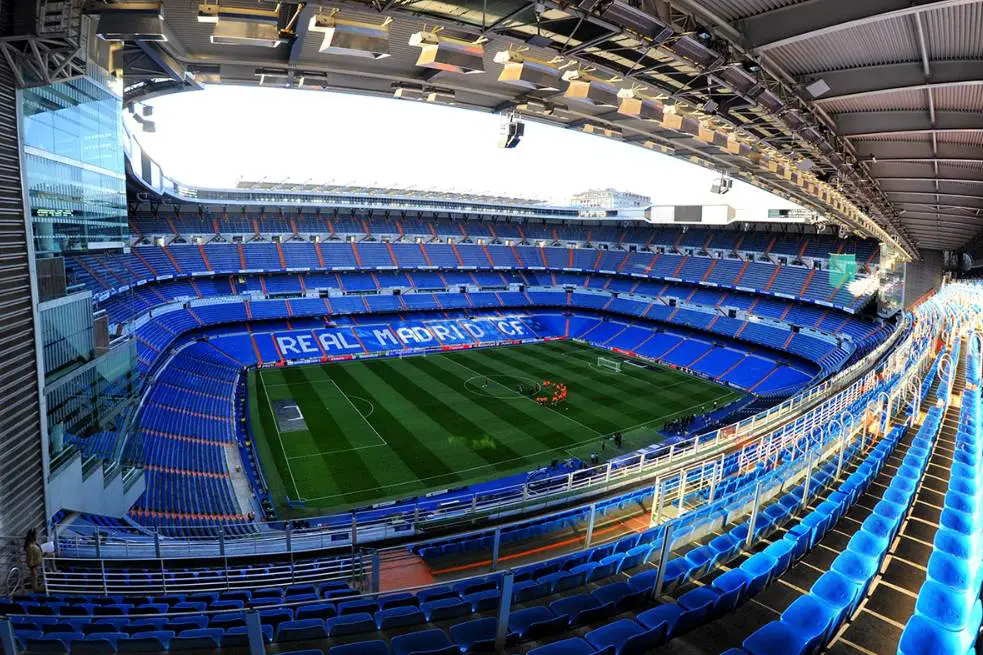
3. Metropolitano Stadium
- Location: Madrid
- Capacity: 68,456
The Metropolitano Stadium or “Wanda Metropolitano” is the home of Atlético Madrid, the archrivals of Real Madrid. The original version of the stadium was constructed in the early 1990s in an attempt to win the 1997 World Athletics Championships. It eventually passed into the hands of the football club in 2013.
The stadium was completely renovated between 2014 and 2017 and has replaced the Vicente Calderón Stadium, the former home of Athlético, ever since. It’s arguably one of the most beautiful stadiums in Spain.
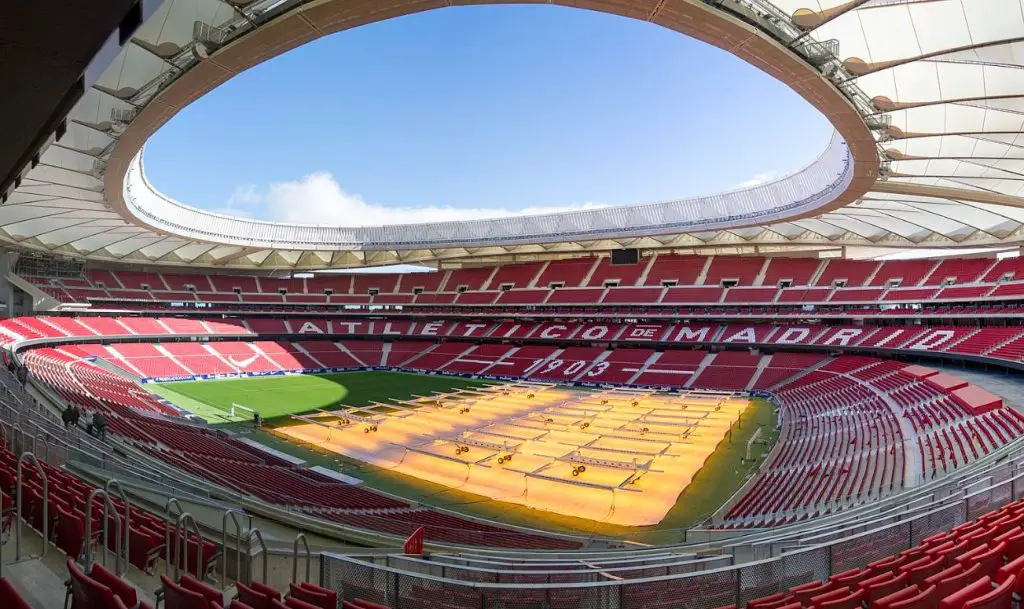
4. Estadio Benito Villamarín
- Location: Seville
- Capacity: 60,720
Estadio Benito Villamarín is a stadium in Seville that was originally completed in the year 1929. It has served as the home of Real Betis Seville ever since. It was renovated several times, including renovations projects that were completed in 1982, 2000, and 2017.
The stadium doesn’t look like a massive football stadium with over 60,000 seats at first sight. That’s mainly because only the main stand features a roof, a feature not needed in southern Spain. The southern stand was demolished and rebuilt in 2017 which brought the capacity from 52,000 to 60,720 that year.
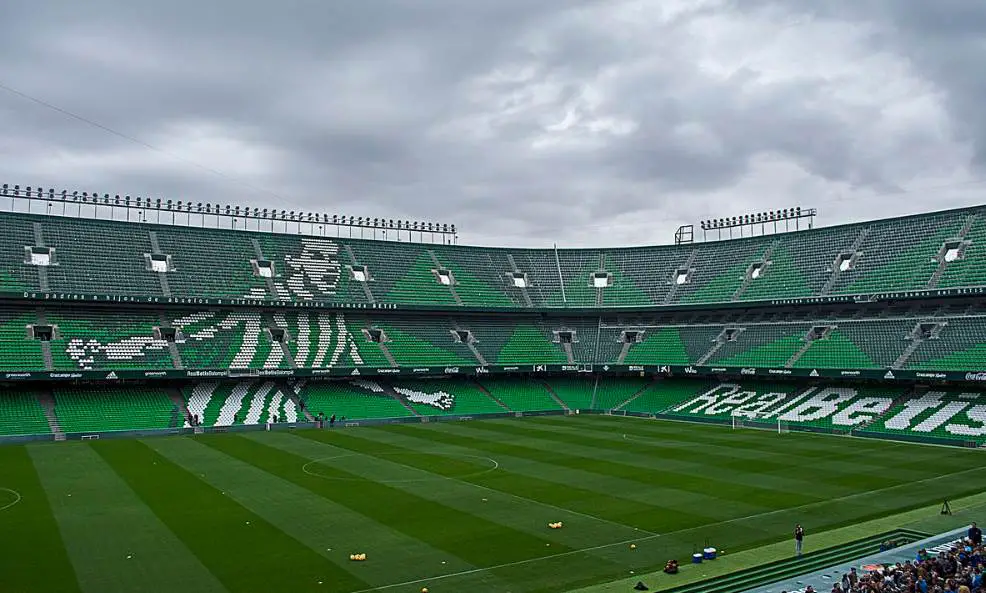
5. Estadi Olímpic Lluís Companys
- Location: Barcelona
- Capacity: 60,713
Estadi Olímpic Lluís Companys was originally known as Estadi Olímpic de Montjuïc. This was a reference to the nearby hill in Barcelona where it’s located. The stadium was completed in the year 1927 and was constructed to serve as both the centerpiece of the 1929 International Exposition and a bid for the 1936 Summer Olympics.
Barcelona wasn’t awarded the Summer Olympics in 1936 but after a thorough renovation in the early 1990s, it served as the main venue of the 1992 Summer Olympics. It also served as the home venue of the Spanish football club RCD Espanyol between 1997 and 2009.
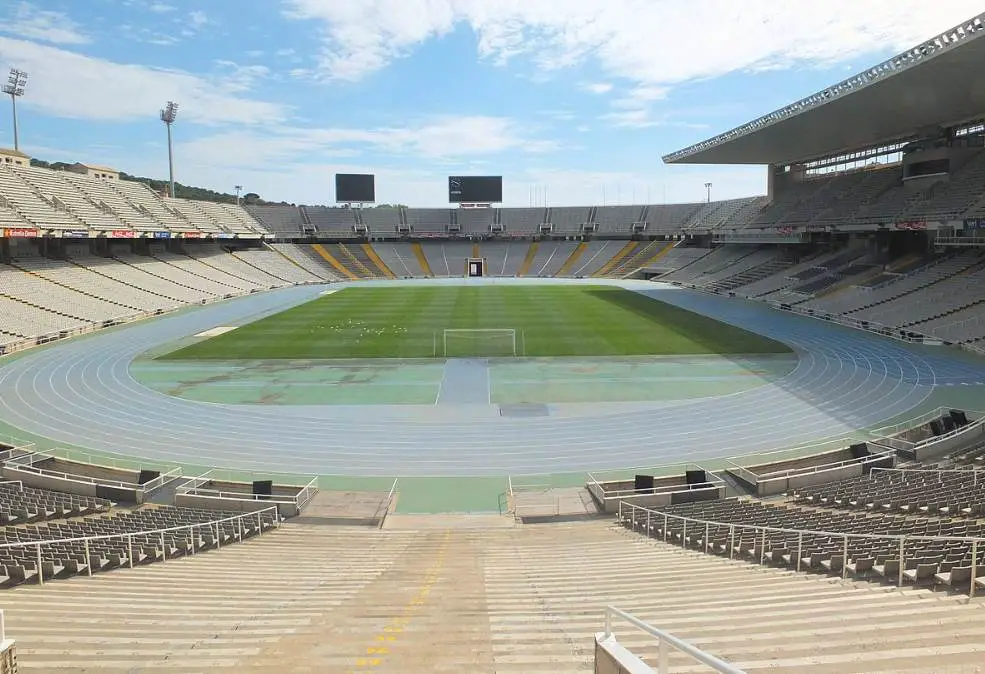
6. Estadio La Cartuja
- Location: Seville
- Capacity: 57,619
Estadio La Cartuja is another stadium in Seville and another stadium in Spain that features an athletics track. It was specially constructed to host the 1999 World Championships in Athletics and still serves as the venue of important athletics competitions.
The stadium was named after the Isla de La Cartuja, a large river island in the Guadalquivir River where it’s located. This river island is situated in the northern part of the city in southern Spain. It served as an unsuccessful bid to bring either the 2004 or 2008 Summer Olympics to the city.
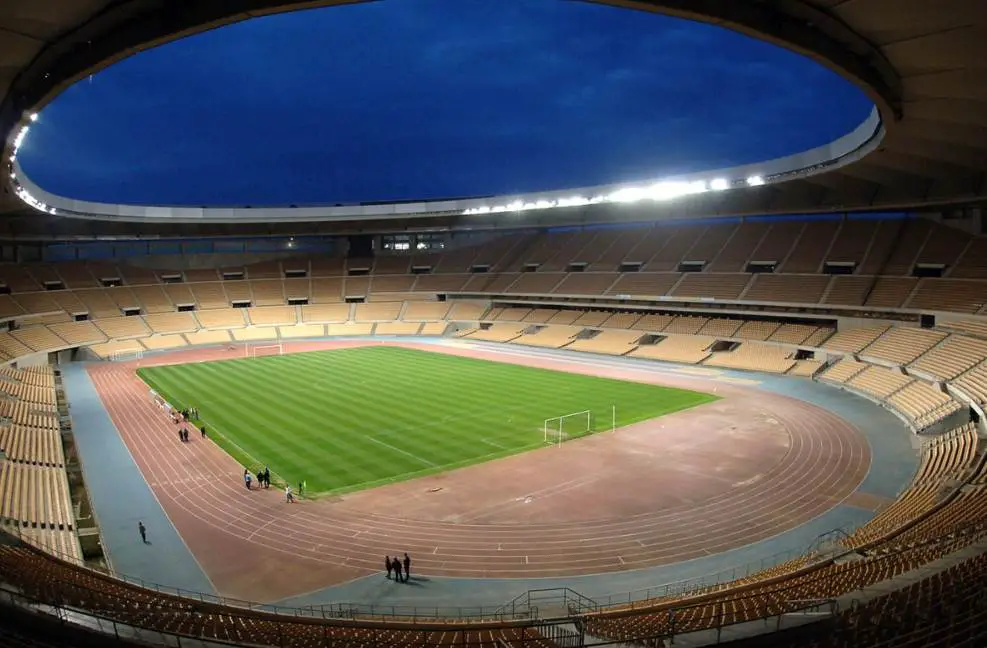
7. San Mamés Stadium
- Location: Bilbao
- Capacity: 53,331
San Mamés Stadium is the magnificent home of the Spanish football club Athletic Bilbao. It’s impossible to choose whether this or the Wanda Metropolitano is more beautiful so it’s probably a tie in that regard.
The stadium was constructed between 2010 and 2013 and replaced the former home of the club now known as the “Old San Mamés,” named as such to commemorate a nearby church. The stunning new arena was constructed for 211 million euros, quite a hefty fee for a rather modest club.
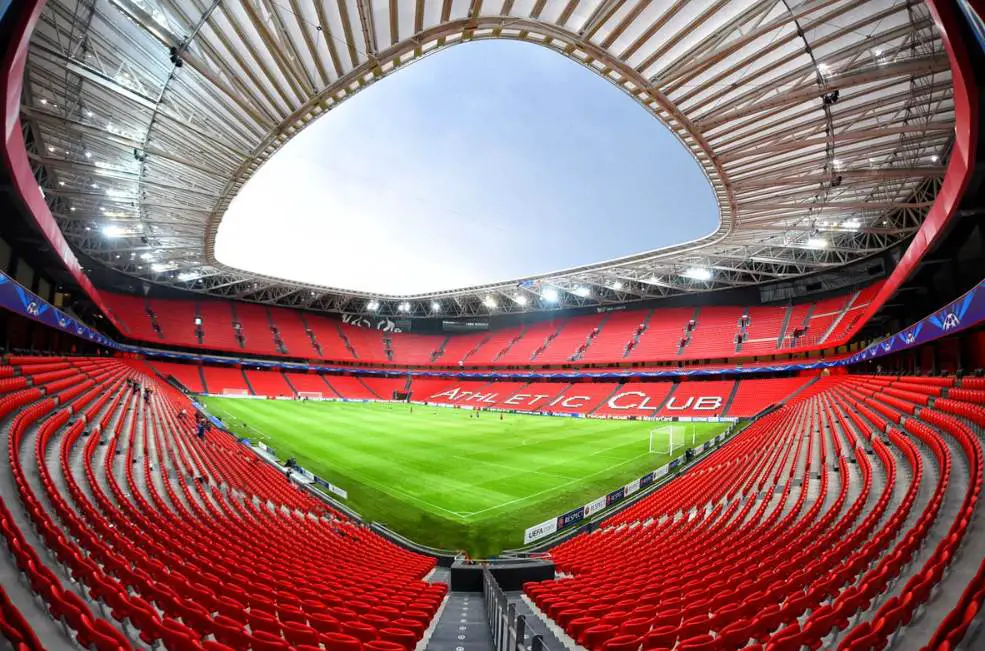
8. Mestalla Stadium
- Location: Valencia
- Capacity: 49,430
Mestalla is another historic stadium in Spain that has an extensive history dating back to the 1920s. It’s located in the heart of Valencia, a large city on the east coast of Spain. The original stadium in this location was completed in the year 1923 and had a capacity of 17,000 spectators.
The stadium was renovated several times and most significantly in a project that was completed between 2005 and 2007. The stadium was about to be placed by a new one that was to be called “Nou Mestalla,” but this project has been shelved.
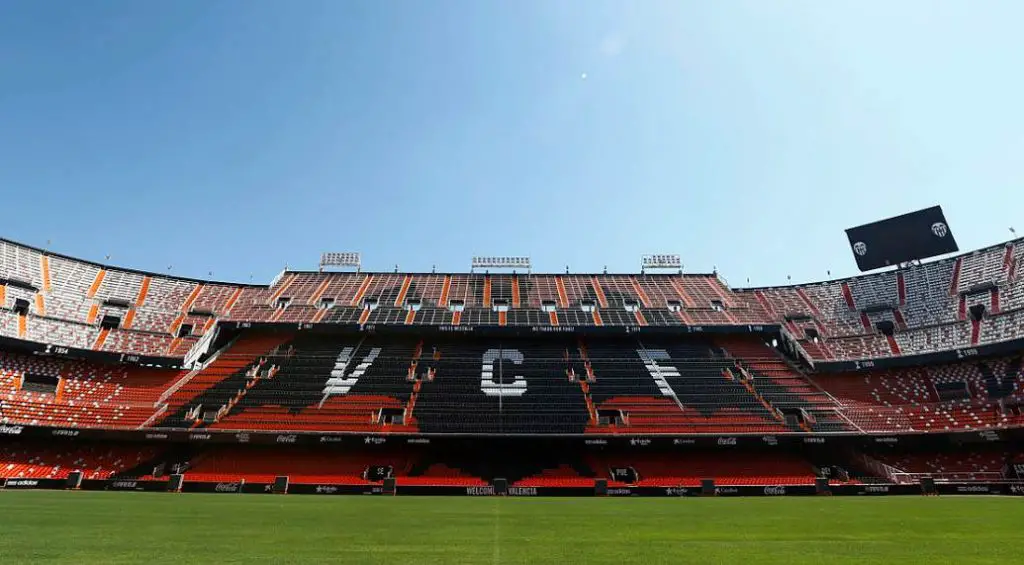
9. Estadio Ramón Sánchez Pizjuán
- Location: Seville
- Capacity: 42,714
Estadio Ramón Sánchez Pizjuán is the smallest of the 3 large stadiums in Seville, but it’s home to the biggest football club in the city, Sevilla Fútbol Club. The stadium was constructed between 1955 and 195 and was renovated in both 1996 and 2017.
Just like its bigger brother that serves as the home of Rela Betis, it’s a stadium in which only the main stand features a roof. The stadium was named in honor of a former president of the club, Ramón Sánchez-Pizjuán (1900-1956), a man who passed away during the construction.
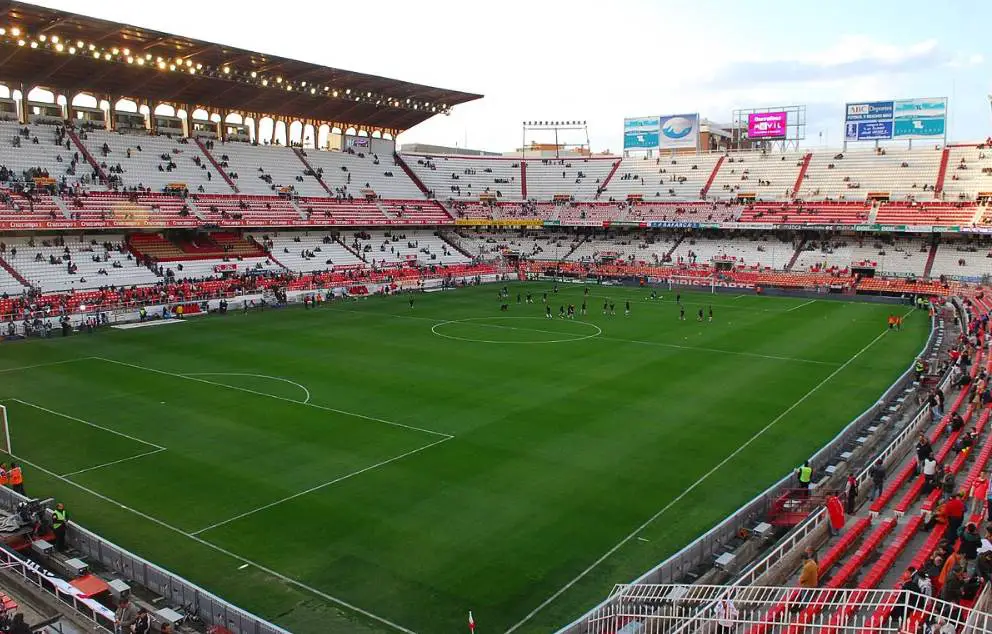
10. RCDE Stadium
- Location: Barcelona
- Capacity: 40,000
RCDE Stadium is also referred to as “Estadi Cornellà-El Prat” and is the home of the Spanish football club RCD Espanyol, the second major club in the city of Barcelona. The stadium was constructed between 2003 and 2009 and has served as the club’s home venue ever since.
The stadium is located in the neighborhoods of Cornellà de Llobregat and El Prat de Llobregat which are situated on the southwestern outskirts of the city. It’s one of the stadiums in Spain that is also used for multiple other purposes, including concerts.
